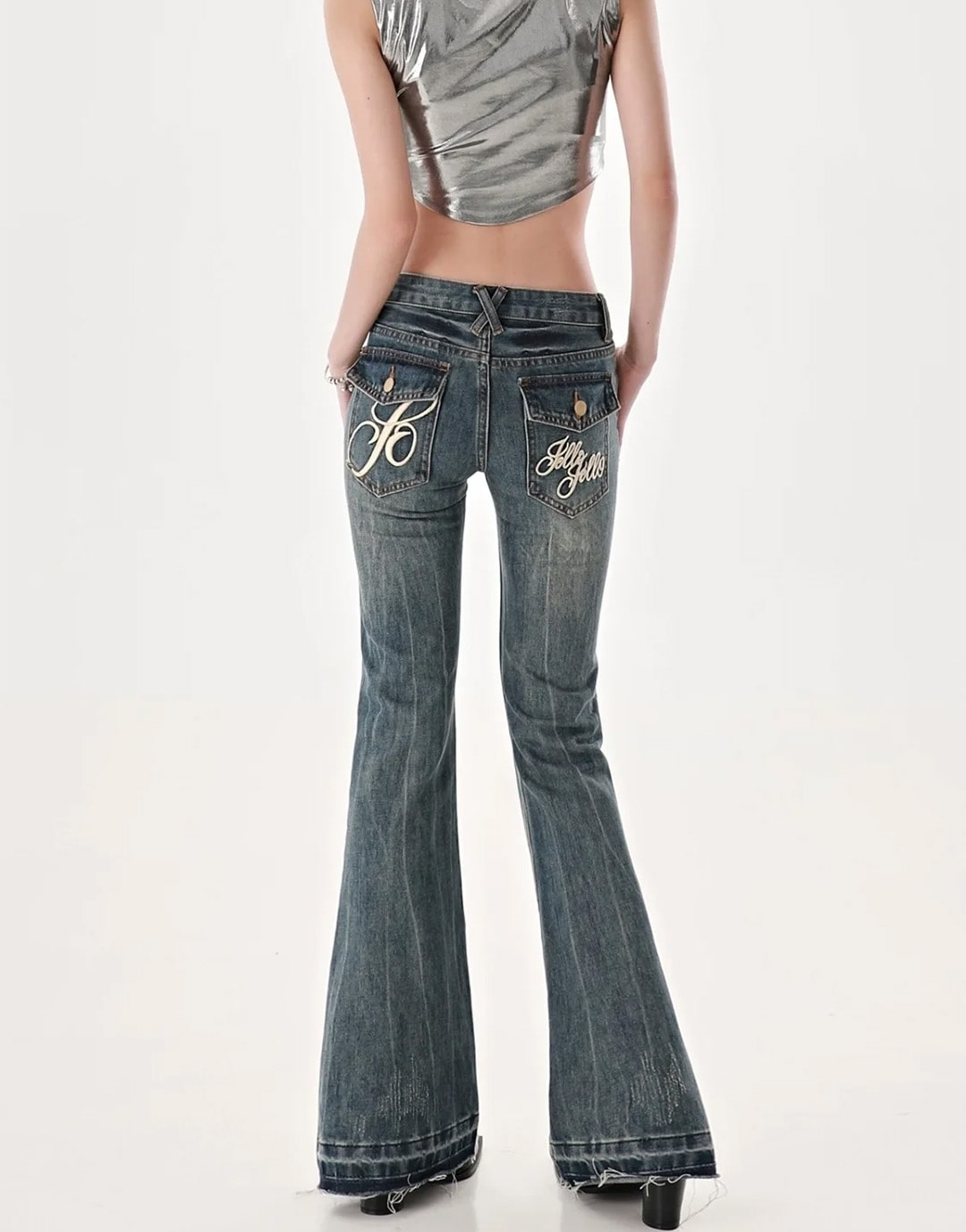
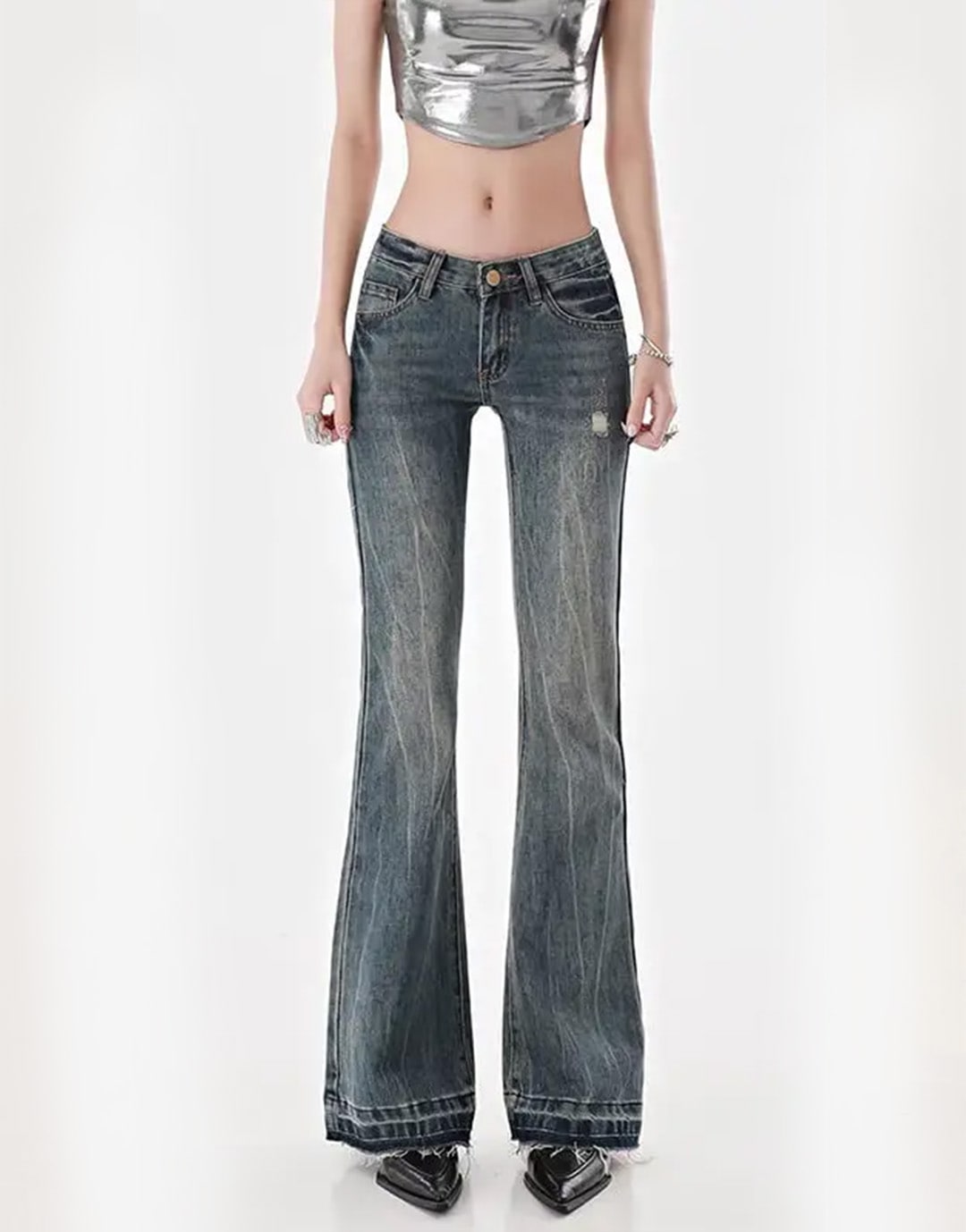
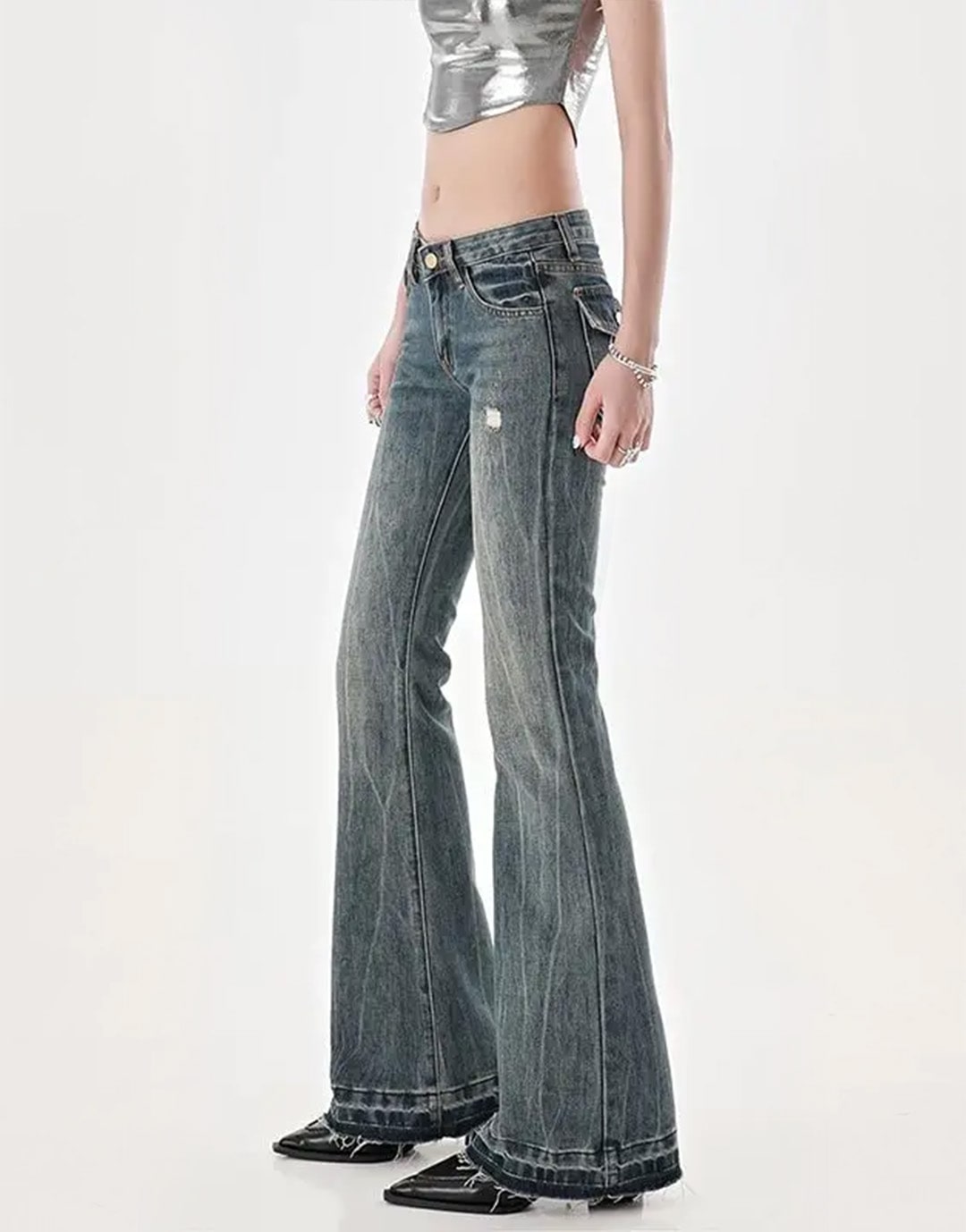
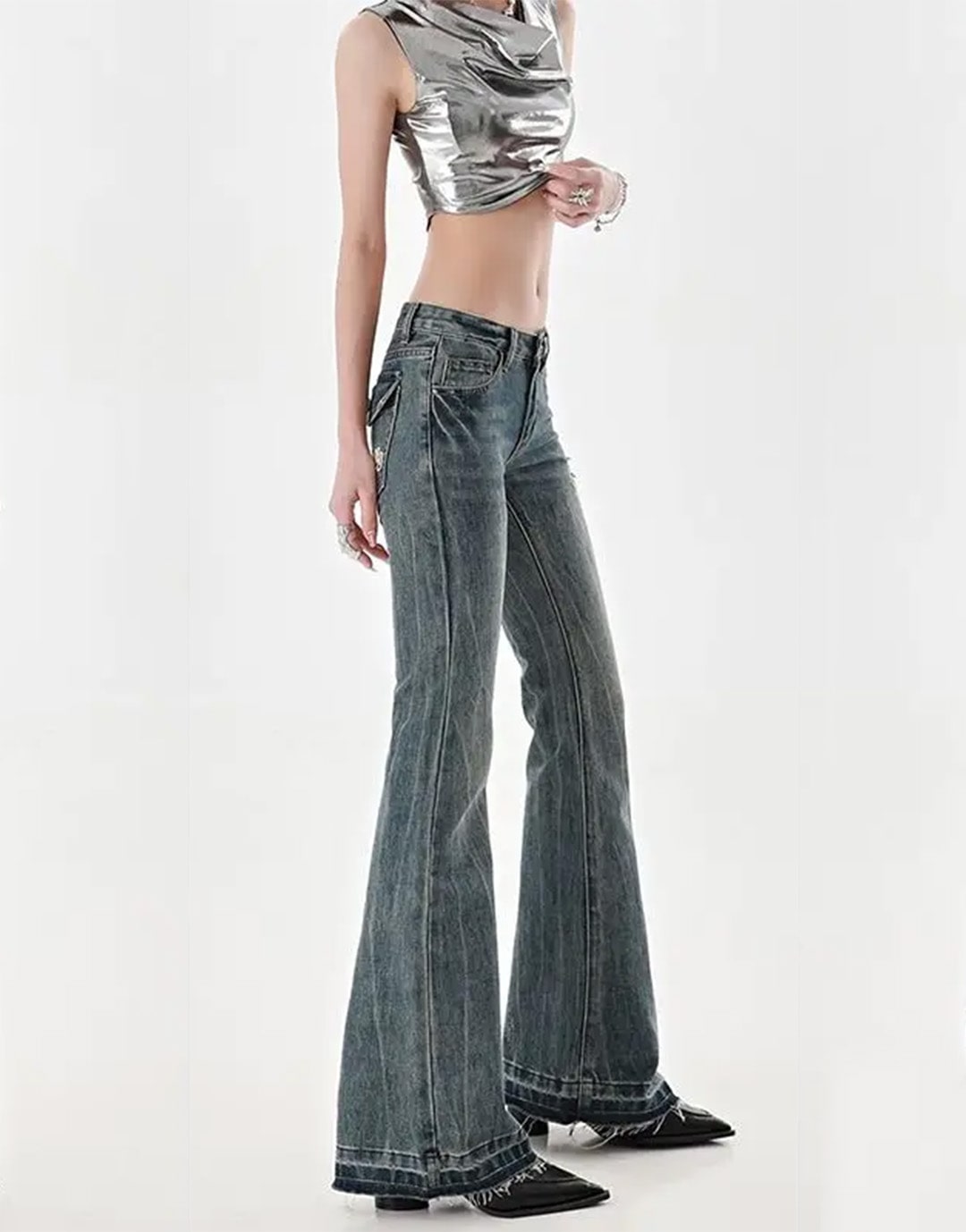
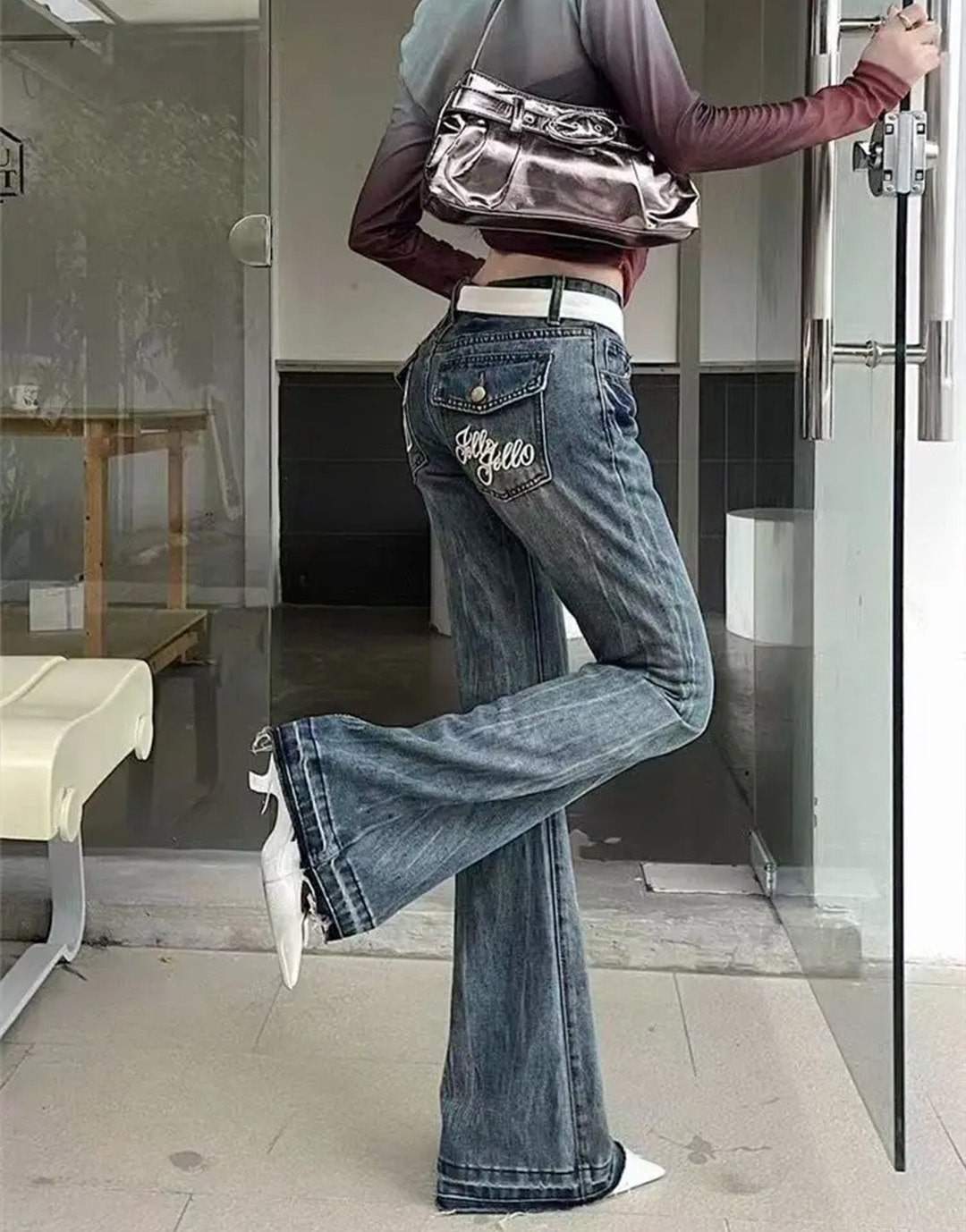
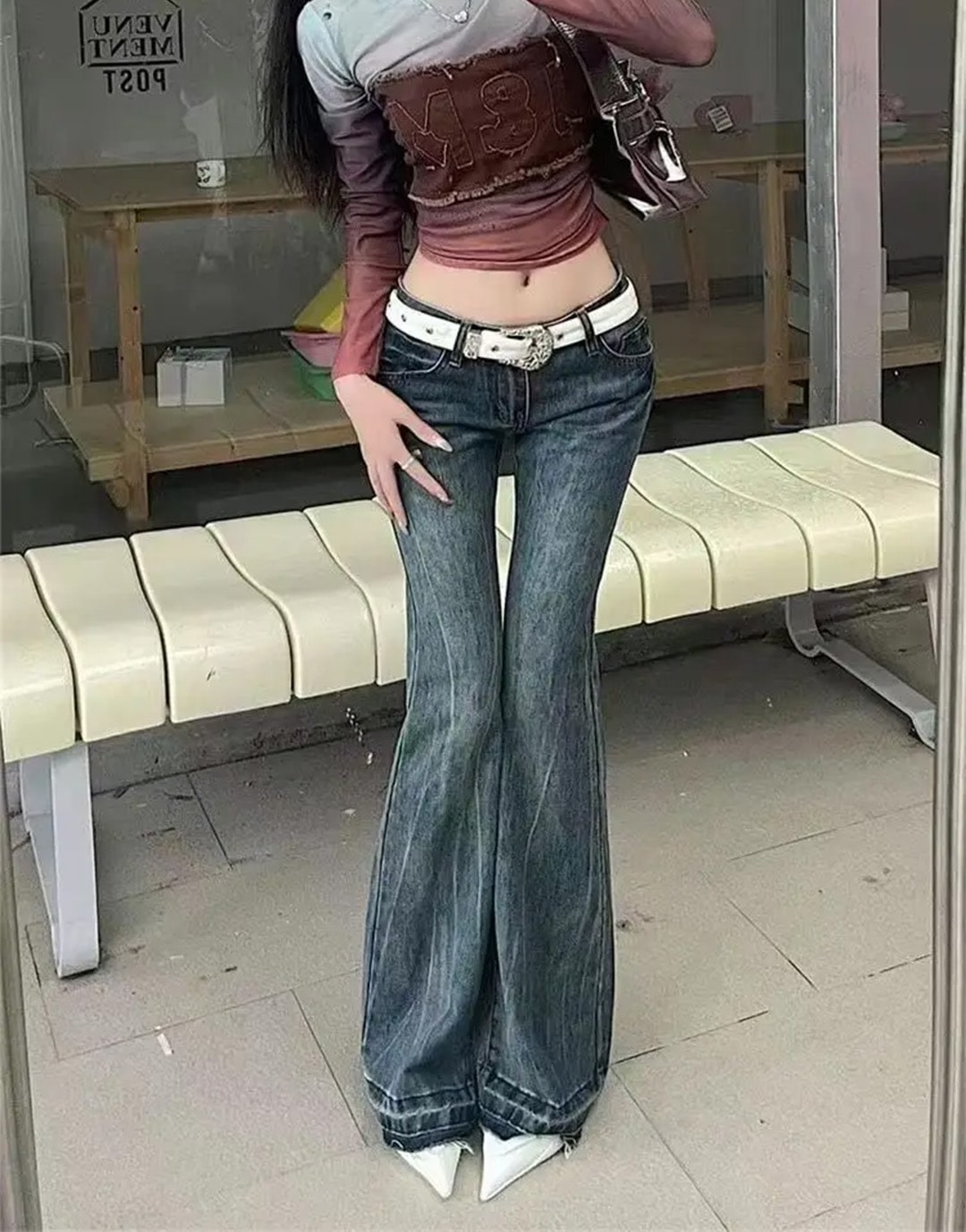
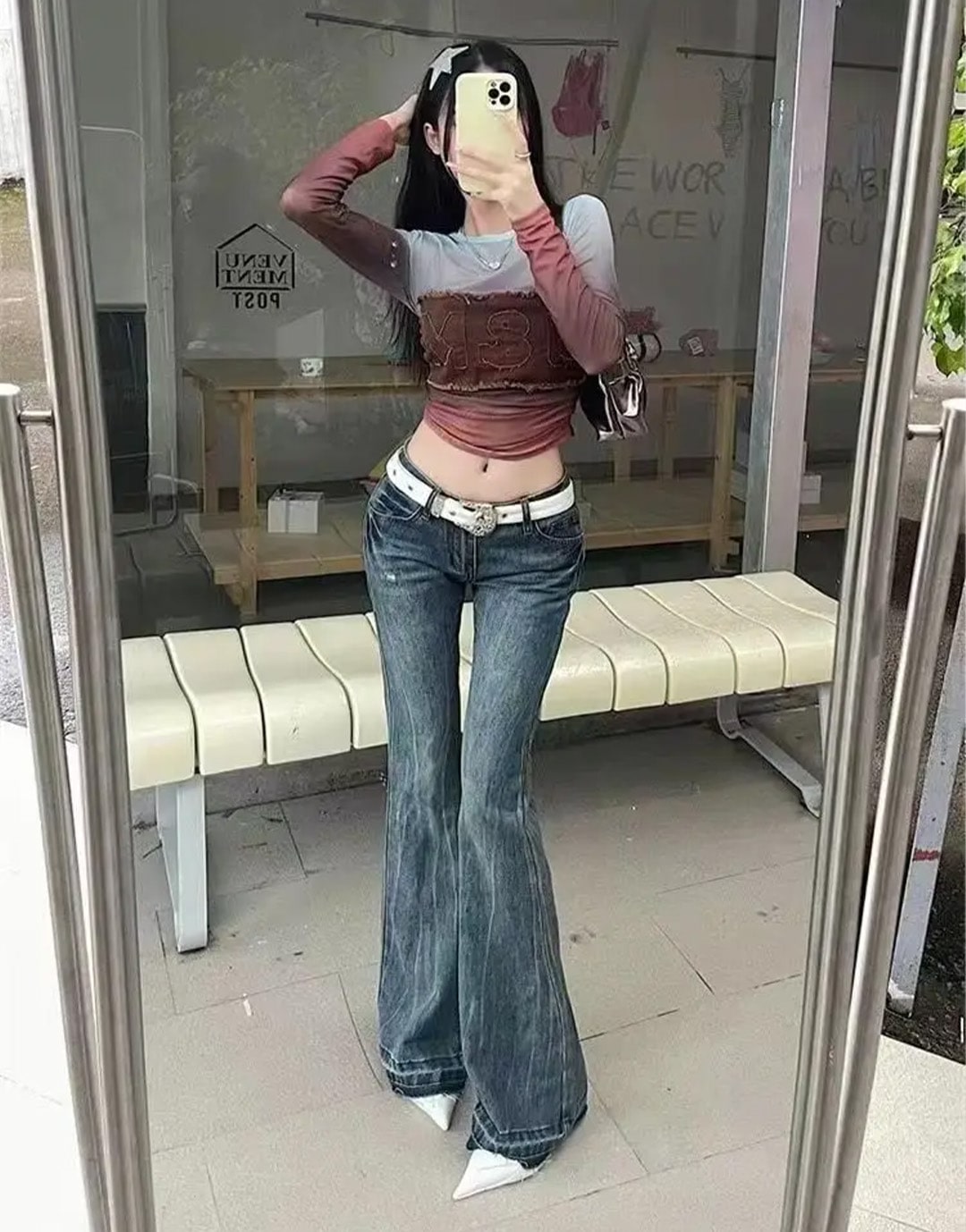
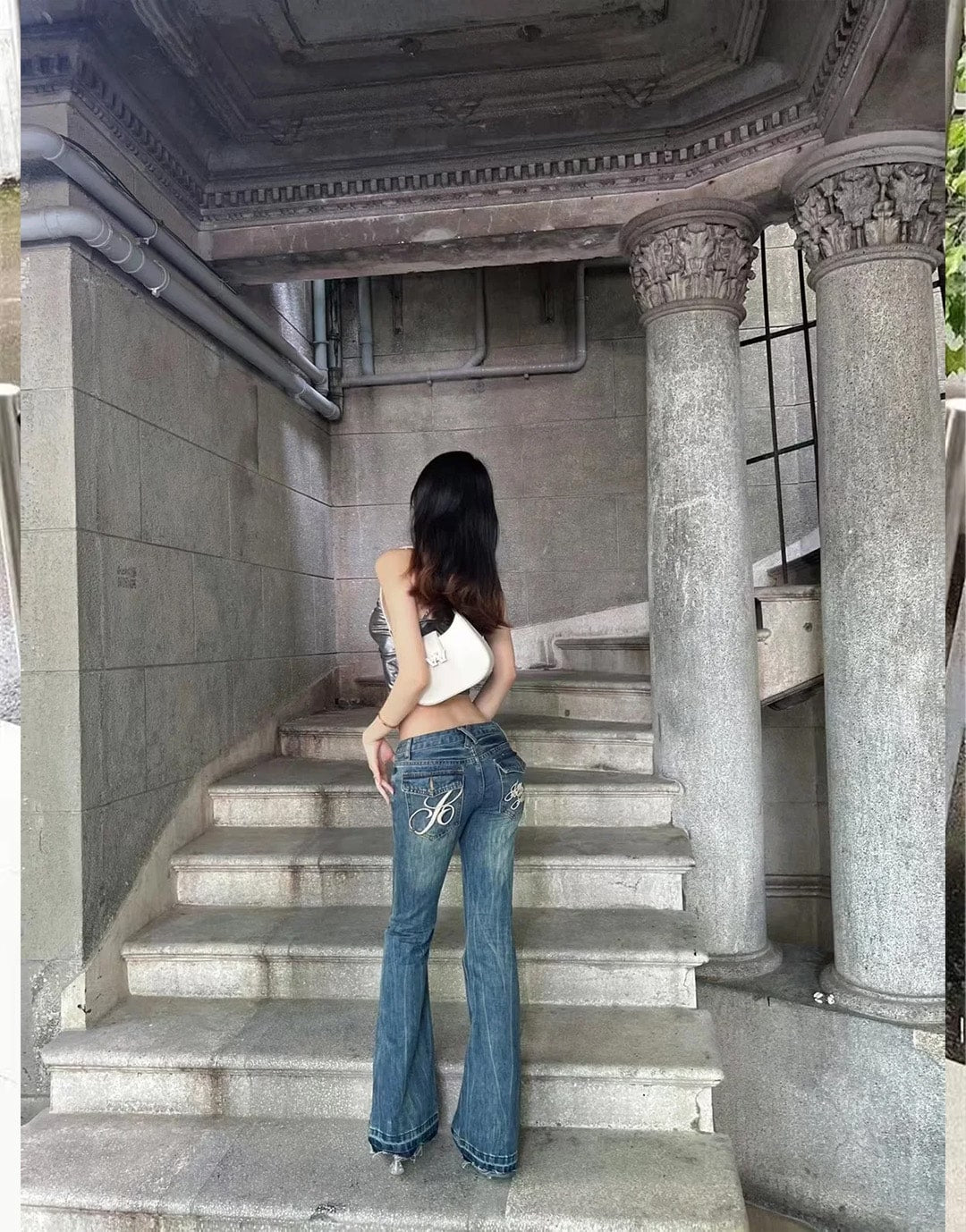
Y2K Bootcut Jeans
Size



shipping
Return
payment
The early 2000s whisper back to us through fabric and silhouette, carrying secrets between their warp and weft. Like vinyl records spinning in reverse, fashion's cyclical nature turns once more — this time with a generation that wasn't there the first time around reaching for moments they know only through pixelated screens and stories from older siblings. These aren't mere Y2K revival pieces; they're excavations of collective memory, threading identity through needle and eye.
Once dismissed as relics from before social media had a face, low-rise denim now carries the weight of both nostalgia and newfound meaning. What was ordinary in the era of MTV and flip phones transforms into armor for those carving space in an increasingly standardized world. The embroidered back pockets become canvases where personal narrative meets cultural artifact, each stitch holding the tension between rebellion and belonging.
In crowded subway cars and dimly lit clubs, through endless scrolling and real-life encounters, these jeans pulse with something more than retro charm. The flared leg opening cuts against the air like a declaration, while the stonewashed fabric bears the weight of time softly. They're not costumes from a themed party but talismans for those who understand that looking back sometimes means seeing forward — that the Y2K aesthetic speaks to a generation navigating their own digital dawn.
What follows traces the journey of these reimagined classics through contemporary landscapes where past and future blur at their edges. Where the original wearers pass their style like inherited jewelry to those who make it new again, and where every platform shoe paired beneath creates dialogue between eras that understood, in their own ways, the power of standing tall in uncertain times.
Y2K Bootcut Jeans: Channeling the energy of early 2000s icons from Britney to Destiny’s Child
In the sprawling digital night of the early millennium, where flip phones captured grainy memories and dial-up connections hummed their static lullabies, low-rise denim emerged from suburban malls into the consciousness of a generation seeking something beyond the prescribed. These weren't merely pants but portals to a new form of visibility, worn by teenagers sneaking into underground raves where strobe lights caught the metallic embroidery like captured stars.
While the mainstream was still catching up to the Internet age, these jeans became the unofficial uniform of those who lived between two worlds—the analog reality they knew and the pixelated futures they glimpsed in music videos and early web culture. By the time the Y2K clock struck midnight without catastrophe, flared silhouettes had transformed from practical workwear to symbols of defiance worn by pop princesses and rebellious youth alike.
In the backrooms of MTV's iconic awards shows, these pants witnessed history being made as music's biggest names redefined what femininity could look like in the new century. Meanwhile, in warehouse districts across America, young women paired their low-riders with baby tees and butterfly clips, creating a lexicon of style that spoke to freedom from modesty culture, even as it carried its own coded messages of availability and agency.
What's more, the tension between empowerment and objectification played out through fabric and fit, creating a dialogue that still echoes in today's fashion discourse. Yet as Y2K bootcut jeans faded from daily rotation in the late 2000s, replaced by skinny denim's chokehold on the zeitgeist, something curious began to happen.
The very generation that had dismissed these relics as "too much" found themselves scrolling through Instagram, transfixed by images of their older sisters' abandoned wardrobes. In the hands of Gen Z stylists and vintage curators, these pants experienced a renaissance that went beyond simple nostalgia—they became artifacts of a pre-social media world where style existed in ephemeral moments, not permanent pixels. Fashion weeks from Copenhagen to New York suddenly pulsed with flared silhouettes reimagined through contemporary lenses, paired with utility vests and combat boots that bridged the gap between millennium anxiety and climate crisis urgency.
Today's high fashion runways have reclaimed these cultural totems, transforming them into commentary on everything from digital identity to the cyclical nature of beauty standards. The same embroidered details that once sparkled under disco balls now catch the glow of phone screens, while the low-rise cut—once controversial—has become a statement of body autonomy in an era of endless digital scrutiny.
From Paloma Elsesser to Bella Hadid, the new guard of fashion icons has embraced these pants not as costume but as conversation, using the visual language of the past to interrogate our present. What began as a functional garment for the everyday has ascended to become a canvas upon which we paint our ongoing negotiations with time, Y2K technology, and the ever-shifting landscape of what it means to be seen.
